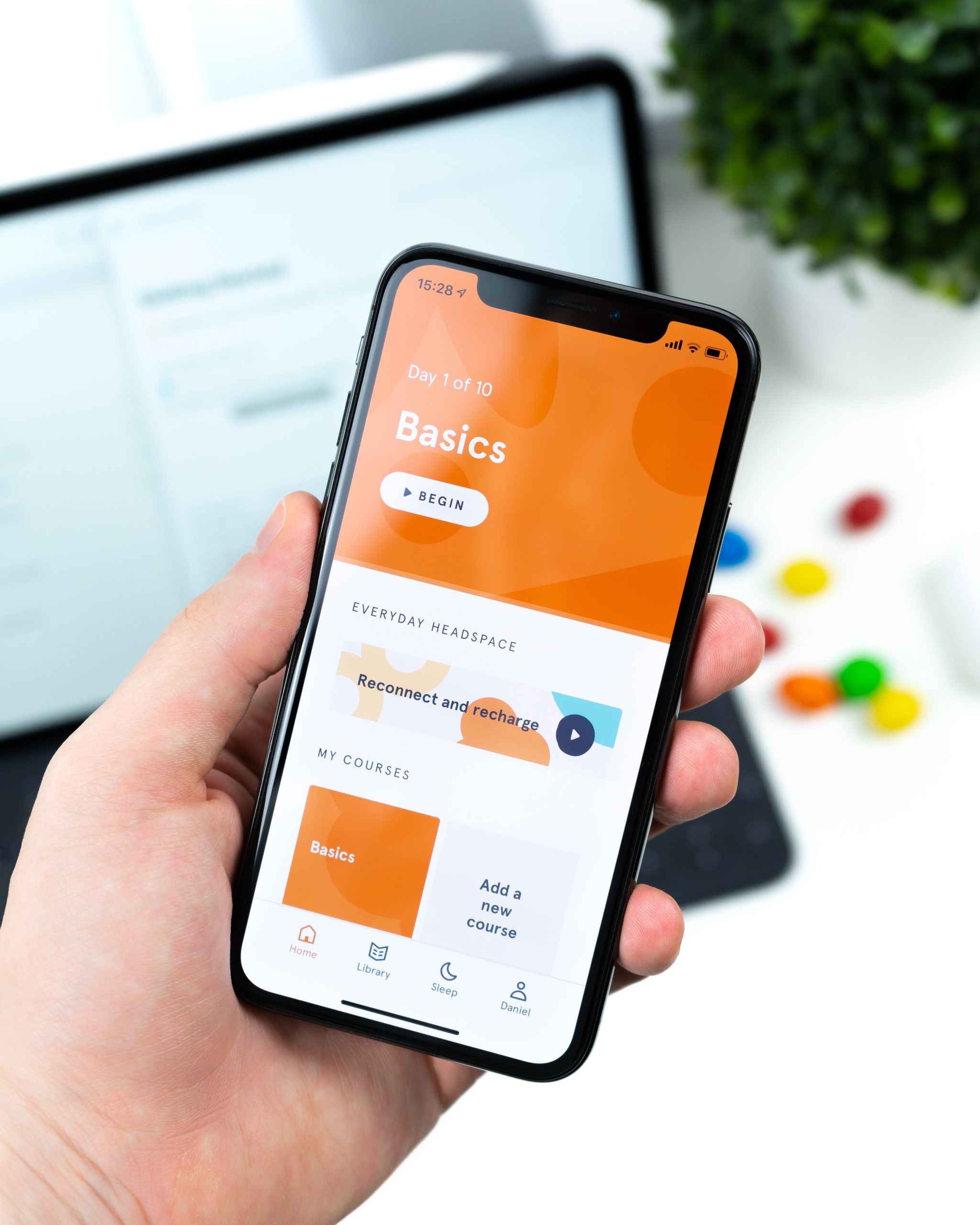[By James Taylor (He/Him)]
[Photo by Daniel Korpai on Unsplash]
It’s not surprising given the-year-that-shall-not-be-named we’ve all endured that the use mindfulness apps continue to soar. They seem perfect; you’re able to access them anytime, anywhere, with no trips to guided classes or distant Himalayan wellness retreats required. As far as tech goes, it appears to be one of the better, more constructive uses of applications (something I’ve used myself). But how much do we know about their benefits, and do they have wider implications for our engagement in the practice?
Studies into the mental and physical benefits of mindfulness apps are scarce, but the few that have been conducted give largely positive indications. Two different studies – one on the app Calm, the other on Headspace– found that these apps were effective in decreasing stress and depressive symptoms, with most participants finding the apps valuable. Although the studies into mindfulness apps are promising, they rely on intensely personal and individual factors; in normal life, your engagement with them can be as sporadic as your mood, as I began to find after a week or so of using them.
Despite the benefits of mindfulness being widely accepted by clinical psychologists and even the NHS, the concrete science behind it remains ambiguous. The term originates from Buddhist practice known as Sati, one of the Seven Factors of Enlightenment. It is simply an attempt, through meditation or other centering practices, to make you aware of your senses and liberate yourself from negativity (being one of the methods of achieving Nirvana in Buddhism). Definitions of the practice and its effects are now multitude. These smartphone apps are the product of a long process of commodification and capitalization, a reinterpretation for modern times, but with modern sensibilities.
Take the Calm app, for example. Its technology offers a dizzying variety of courses and practices (one includes Harry Styles telling a bedtime story, need I say more). Yet it illustrates how the emotional practice of mindfulness has become weighted with capitalism and western interpretations. Looking through the huge array of classes I sometimes felt perversely anxious – there was so much I needed help with apparently. The commodification of mindfulness practices through apps means they become diluted from their authentic emotional or spiritual methodology, carefully packaged as a commercial item. Like any other product, it wants you to need it; it’s a calculated antidote to our boundless mercenary world. They’re paraded on app stores, squeezed between Tinder and Ubereats, giving the impression total Zen is just another downloadable product, a simple click away.
When I first became interested in mindfulness, the sheer mass of apps to choose from was initially overwhelming, like standing in the toothpaste aisle of the supermarket pondering the difference between all these seemingly identical products. Many of the apps’ selling points were their oh-so-consumerist succinctness – exercises that took 10 minutes a day, with the resulting promise of ‘peace’ and ‘acceptance’. But it’s not so simple. I’m reminded of another self-improvement scheme peddled in the fitness industry: the 5 minutes a day ab exercises accompanied by pictures of impossibly toned midriffs, other short and easy routines promising transformative results – do this for thirty days for a shredded chest! They’re all selling points, excluding facts like diet, supplements, and reasonable duration. Imagine your mind is another muscle – short bursts of anti-anxiety will benefit you, certainly, but there are no magical solutions. I found other forms of relaxation – journaling, exercise, spending time in nature – beneficial in incorporating calm throughout my day, rather than rely on one commercial phone app as a concentrated injection. I would argue that the apps are a single tool in a wider process of lifestyle adaption, which is something the apps ought to acknowledge too.
Mindfulness is perhaps a wider state of mind, even a lifestyle. But these apps I used were not sharply tailored to me or my individual issues. They have great benefits, as has been proven, but it’s about knowing what to expect from them, and what you want to achieve. It’s also about keeping in mind that this is a transaction, akin to paid-for workout plans, and therefore a commercial item at its core. If they work for you, fantastic – in many ways they did for me. And if you only use them to listen to Harry Styles, we should be friends. But perhaps, contrary to all universally agreed truths, we should keep in mind Harry Styles can’t solve everything.

